Pellet fireplace: design features
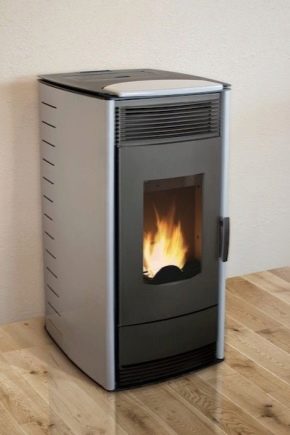
For quite a long time, stoves were considered the optimal heating medium. By comparison, fireplaces seemed impractical and not very comfortable, consuming a lot of fuel. The advent of pellet fireplaces allows you to redefine this look. To choose a suitable pellet fireplace, you need to take into account many individual nuances and subtleties, design features.
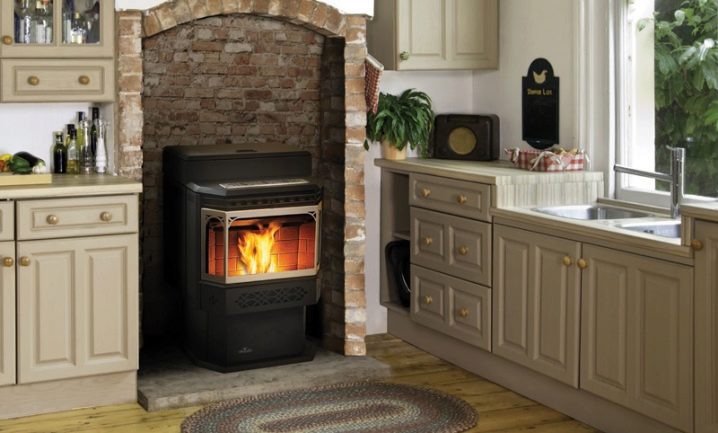
Peculiarities
A typical pellet fireplace runs on fuel pellets, which are obtained by pressing waste wood and paper production, cellulose products. Since this fuel does not have any synthetic components, it is vastly superior to many other fuels. Small homogeneous pellets are easily loaded into the firebox, and you can even automate this process. When using firewood, this cannot be done.
Low humidity and high density increase energy efficiency and significantly reduce shipping costs.

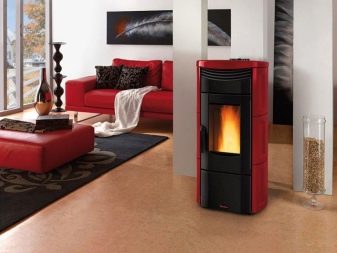
Some of the models have automation, which makes it possible to free people not only from loading pellets, but also from controlling the air supply. It is a pleasure to watch the fire that burns behind the glass door. This design is more aesthetic than service oriented. According to the constructive scheme, pellet fireplaces are fundamentally different from the classic wood-burning counterparts.
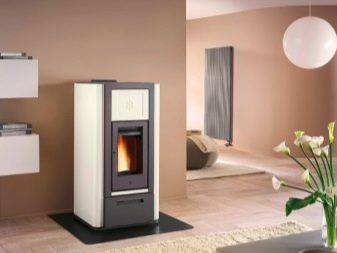
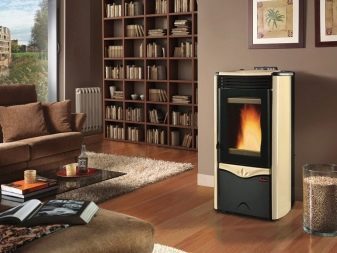
It is also important to take into account the negative qualities of such devices:
- high price;
- the need for engineering services;
- inoperability without power supply;
- the likelihood of noise during operation;
- unsuitable for any fuel other than pellets.
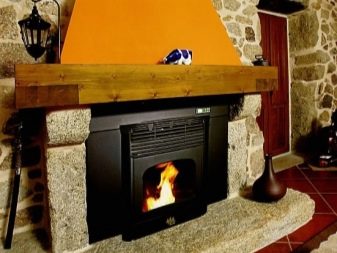
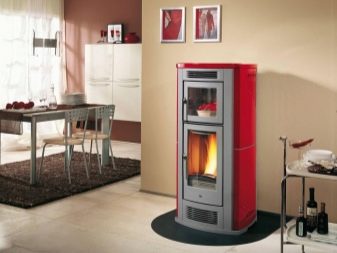
Views
There are two main types of fireplaces where pellets are used: stand-alone and built-in systems. The first type is a stand-alone case that does not need special finishing. The double metal casing and ceramic panel cladding increase thermal inertia and make the device safer.
What is especially important for a pellet fireplace is that ceramics give off heat in the most practical way, by emitting infrared rays. A standard set of pellets allows the fire to burn from 8 hours to 1 day. An upper container is provided for placement.
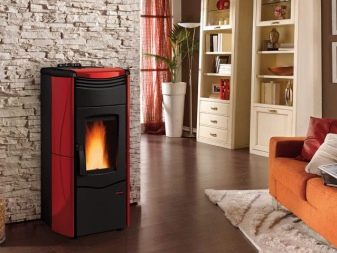
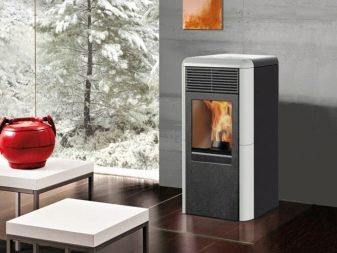
Built-in units are difficult to distinguish from wood-burning fireplaces; in principle, there is no outer casing. There are two options for using the hearth: placement in a niche or installation around cladding materials. The bins can be placed either inside the cladding materials or in an adjacent room. According to the method of heating the home, all the many pellet fireplaces are divided into the following groups:
- convection (these are low-power appliances, such a pellet fireplace can heat one room);
- air ducts (a stream of heated air is used, which moves through several rooms; in each of them it gives off heat);
- with a water circuit (this is just the most popular option among consumers).
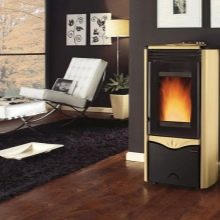
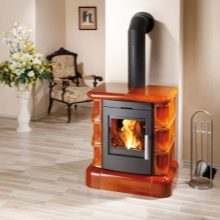
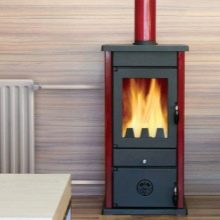
Devices that are connected to water heating are distinguished by their aesthetic appearance, they are the most practical. They are recommended for large mansions and cottages. If you fill the hopper once, it will be possible to provide heating for 48-72 hours.
The efficiency exceeds 80%. Combustion is economical, but technologists have learned to create devices that keep heating up to +90 for a long time. What's more interesting - there are fireplaces that heat water, the power of which starts from 30 kW.

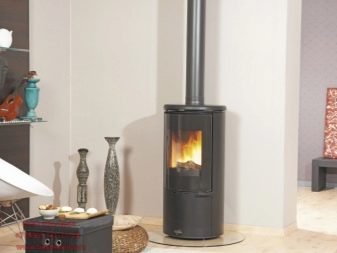
Pellet stoves are superior to classic-type fireplaces in that they do not emit carbon dioxide. This is very good for the hygienic conditions in the home. If, after burning pellets, ash remains from them, it can be used as fertilizer for a garden, greenhouse or vegetable garden. The pellet stove has such undoubted advantages as:
- autonomy in relation to electricity and natural gas;
- automatic stop of combustion if the door is opened or the fuel runs out;
- low operating cost (when compared with competing heaters);
- long service life (if you use the structure correctly and regularly maintain it, the system will work for at least 20 years);
- the possibility of using in large areas, including industrial facilities.
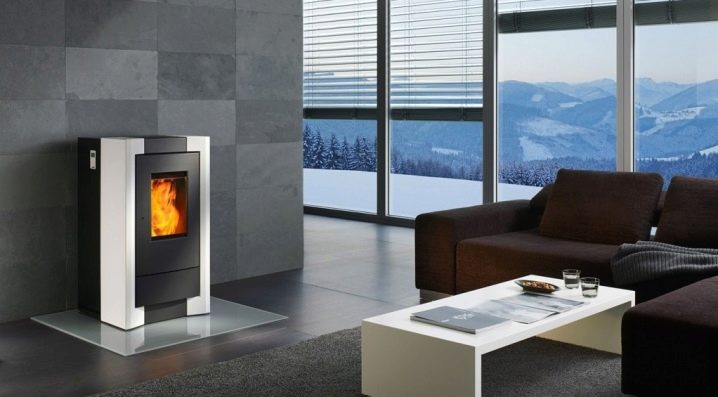
Pellet stoves also have certain disadvantages. The device itself is quite expensive. Residents of small communities may find it difficult when maintenance is needed. Foreign models in many cases cannot cope with Russian climatic conditions and unstable power supply. Due to these factors, pellet stoves deteriorate quickly.
Pellet boiler-fireplaces efficiently heat large country houses and large areas, while the specific fuel consumption per unit area is relatively small.
Heating equipment is often installed in basements; separate rooms or even buildings are also allocated for it.
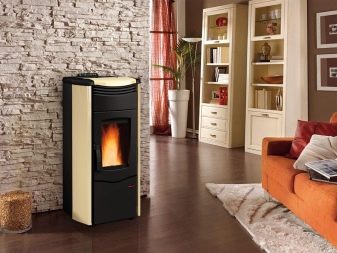
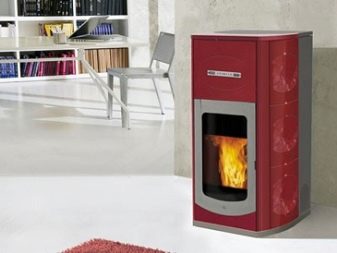
It is necessary to mount such boilers only on non-combustible surfaces, primarily metal ones. There are systems that work not only on pellets, but also on dry wood and sawdust. Moreover, switching to an atypical mode can either occur additionally or already be provided for.
A well-made chimney is of great importance - regardless of the type of construction. Only special grades of stainless steel can be used for it. Even the inside of a brick chimney is supposed to be filled with a steel pipe.
If the heating system itself is located in a room that does not have heating, it will be necessary to thoroughly insulate the smoke exhaust duct.


A typical pellet fireplace is non-volatile, however, there are models that are complemented by electric motors (allowing it to work for a while in the absence of fuel, and also quietly wait for it to be loaded). Pellet air fireplaces are most often vertical, like most other models of this device. It is possible to increase the efficiency of a system that transfers heat in a purely convective way, both through forced airflow and through careful selection of the location of the fireplace.
Pellet fireplaces are divided into compact and standard size devices. In the SIP-house, you can use different options - depending on what area of the territory is to be heated.
It is necessary to take into account not only the technical characteristics, but also the appearance of the structure. It should be pretty aesthetic.
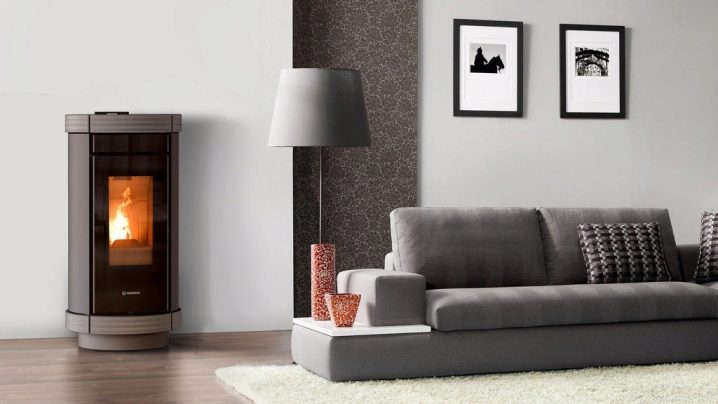
Design
There are general design requirements for all fireplaces (not excluding pellet):
- you should choose stone products that are as directed upward as possible in order to compensate for the visual severity of the material;
- you can combine stone products with wooden structures and elements around;
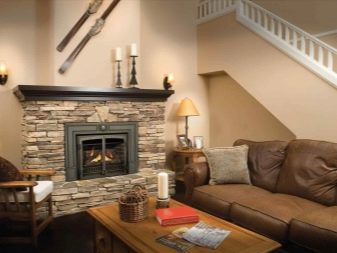

- in a modern interior, you can both mask the traditional nature of the fireplace, and deliberately add rustic notes with its help;
- it is worth paying attention to the combination of a heater with furniture located in the room;
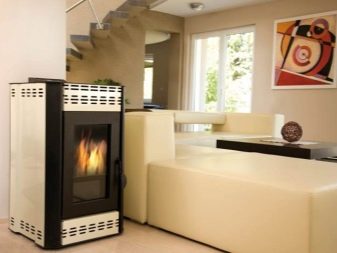
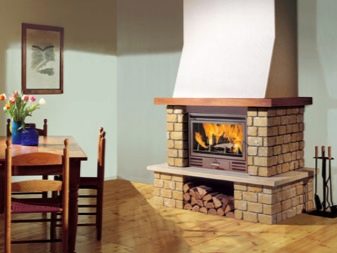
- the size and shape of fireplaces are selected according to the type of room.
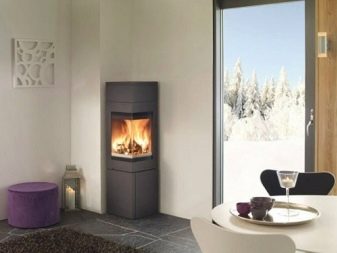
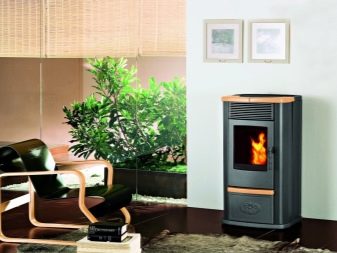
Manufacturers and reviews
Pellet fireplaces Vesuvius are distinguished by well-oiled automatic control. Owners just need to set the basic parameters of work and supply the structure with fuel, after which they do not have to worry about additional manipulations.The PKP-05 model provides automated fuel supply to the combustion chamber. The efficiency of the device (depending on conditions) can be 84-90%. 96 kg of steel can easily heat 120 sq. m of the living area of the house.
Macedonian fireplaces Termal have a power of 6 to 12 kW, and the installation of such structures is extremely simple and convenient. Manufacturers initially took care of consumer comfort. The main colors are burgundy, beige, black.
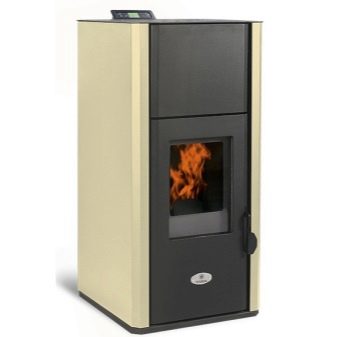

Gran K08 13 - an exquisite black fireplace of relatively small size (with a closed firebox). The device is capable of heating up to 130 sq. m and maintain a normal temperature in the house for up to 3 days - at one filling with granules. The elegant steel body is robust and reliable, and the glazed door is comfortable enough. It should be noted that a prerequisite for the operation of the fireplace is the connection to the electrical network.
Radijator pellet systems produced in Serbia are presented in a variety of series. ECO Comfort 25 - a line that has been produced since 2015 and combines all the latest innovations in the industry. Automatic fuel supply and 90% efficiency are not all the advantages of this equipment. The newest and most thoroughly tested materials and technologies are used in its production.
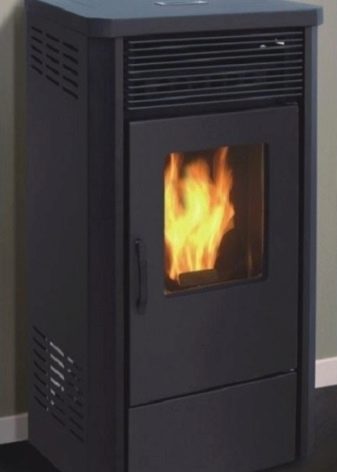

Beautiful examples in the interior
Pellet fireplaces are indistinguishable in appearance from conventional wood-burning designs, and the design approaches are the same. Natural home decorating styles work best with masonry. By choosing a steel frame as the outer edge, the consumer will be able to perfectly fit the structure into the interior, decorated in modern style. The use of dark tones in this case is considered the best option.
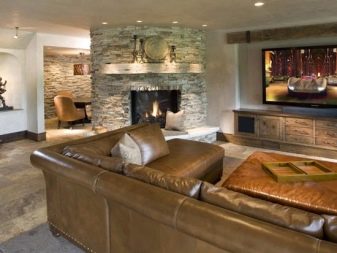
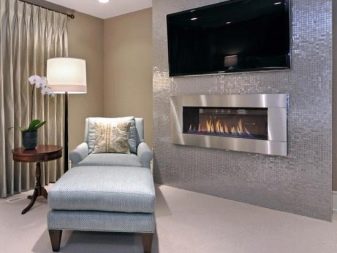
A fireplace lined with high-quality brick material on the outside will fit well into the country setting. To create a sense of the uniqueness of the product, it is enough to build the structure into the wall in an unusual way.
So, pellet fireplaces are technically perfect and flawless in terms of design. With their help, you can decorate any interior, get an atmosphere of coziness, comfort, emphasize stability, prosperity, warm the house. Many consumers choose such designs today, and this is not surprising, because they have a large number of advantages.
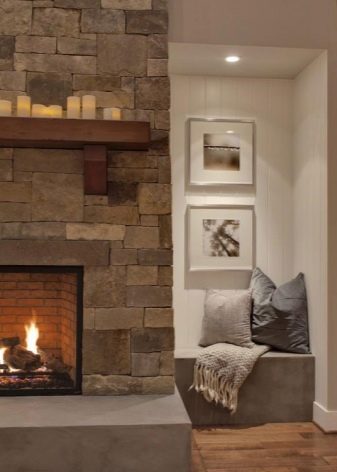
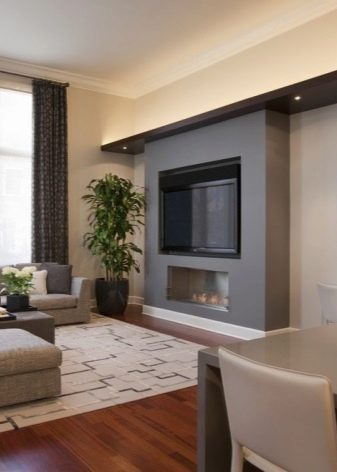
For more information on the advantages and disadvantages of heating with a pellet fireplace, see below.













The comment was sent successfully.